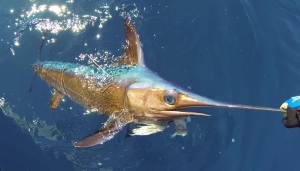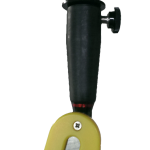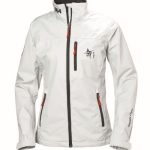
All non-longline swordfish fisheries are required to use handgear – handline, harpoon, commercial rod and reel, green-stick and bandit gear. Handgear takes far less bycatch than does pelagic longline gear, much of the time it takes none making the fisheries cleaner and sustainable. Increasing landing limits to these fisheries makes sense, whereas allowing pelagic longlines back into the Closed Zones to fish for swordfish does not.
Increasing swordfish retention limits to handgear fisheries was the focus of a NOAA phone meeting that The Billfish Foundation (TBF) staff members recently joined. The government’s first presented Preferred Alternative is for vessels with a Commercial Caribbean Small Boat (CCSB) permit. The proposal would increase the CCSB retention limit from 2 to 6 swordfish, per trip, while fishing in waters around Puerto Rico and Virgin Islands (Caribbean). All vessels issued this permit must be under 45 feet in length.
The second Preferred Alternative presented by the government proposes an increase in the default retention limit from 3 swordfish to 6 swordfish per trip for vessels issued a Swordfish General Commercial (SGC) permit and for HMS Charter/Headboat (CH) permit holders with a commercial endorsement on not-for-hire trips.
At the same time in a separate action, the agency issued its routine sixth month in-season swordfish retention adjustment, as has been done since 2008, to the SGC and the CH swordfish fisheries. This recurring adjustment authorizes an increase from 3 to 6 swordfish per trip for permitted vessels fishing in NW Atlantic waters, including the Gulf of Mexico and Caribbean Sea. If the Preferred Alternatives presented are approved, a separate in-season adjustment will not be necessary for all three of the permitted fisheries in the future. (SGC, CH, CCSB).
To stay up to date on all things billfish, become a member, subscribe to our monthly newsletter, visit our online shop, and follow us on social media, @TheBillfishFoundation.






